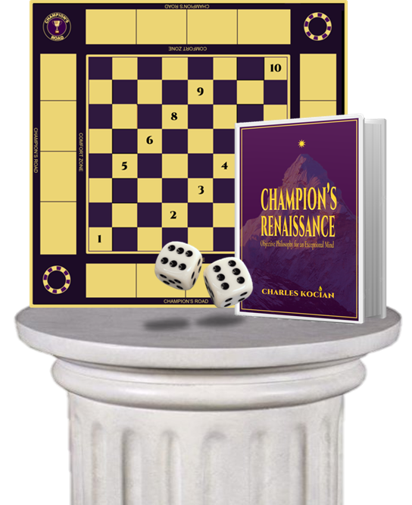
(Answer at the end).
MERRY WINTER SOLSTICE
By Charles Kocian
In the Northern Hemisphere, December 25th is the shortest day of the year, and when days begin to become longer, announcing spring, life and light.
According to Wikipedia: “The winter solstice, also called the hibernal solstice, occurs when either of Earth’s poles reaches its maximum tilt away from the Sun. This happens twice yearly, once in each hemisphere (Northern and Southern).
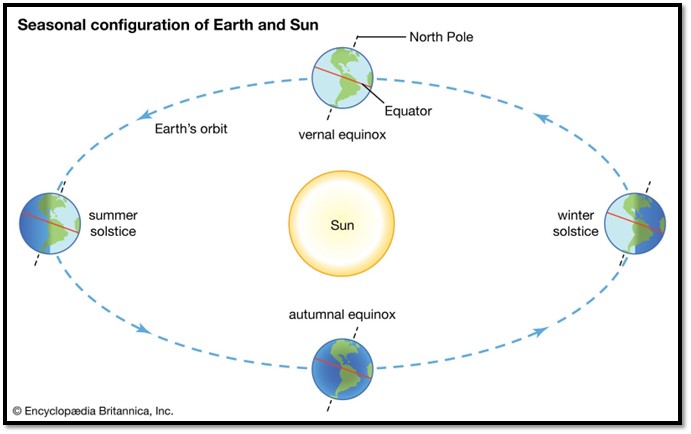
Solstice and equinox scheme.
For that hemisphere, the winter solstice is the day with the shortest period of daylight and longest night of the year, when the Sun is at its lowest daily maximum elevation in the sky. Either pole experiences continuous darkness or twilight around its winter solstice. The opposite event is the summer solstice.”
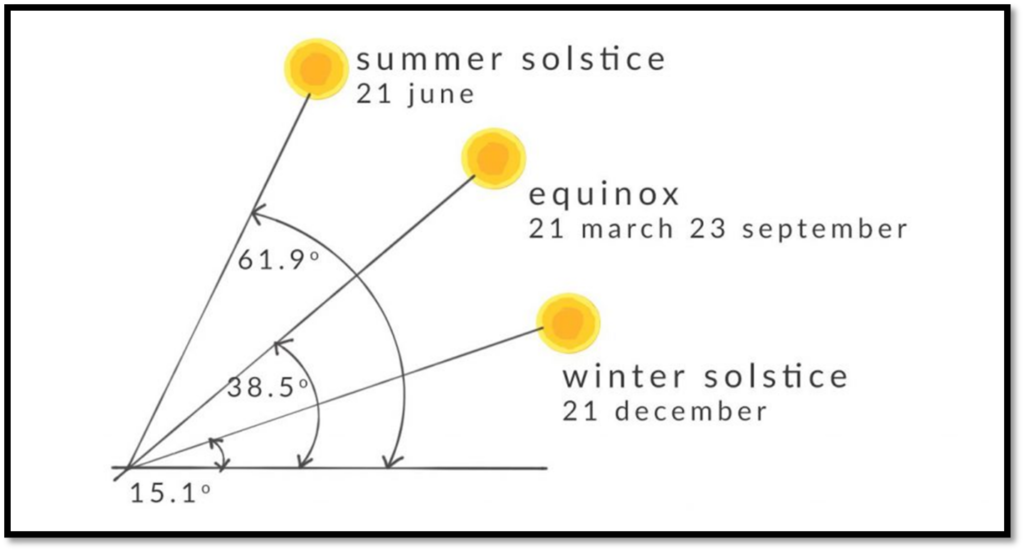
Winter solstice angle.
Neolithic men observed that in winter the angle of the sun at midday was short meaning less hours of light. But after the Winter Solstice the angle will start to get bigger and the days longer towards spring and a new cycle of life.
Temples like Stonehenge were built to measure or detect Winter Solstice. Cultural celebrations like Yule were synchronized to this given astronomical fact on Earth.
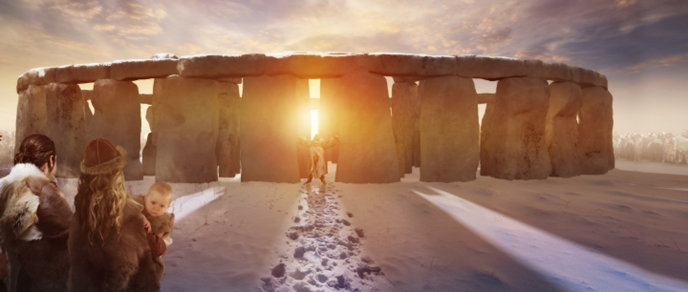
Stonehenge in Winter Solstice.
Being the Winter Solstice a given-observable-absolute-fact-of-nature, many societies celebrated this same astronomic event: the rebirth of light and the life cycle on Earth. For the Celts, it was Yule; for the Jews, it was Chanukah; for Chinese, Dongzhi; for Iran (Persia), Shab-e Yalda; for Japan, Toni.
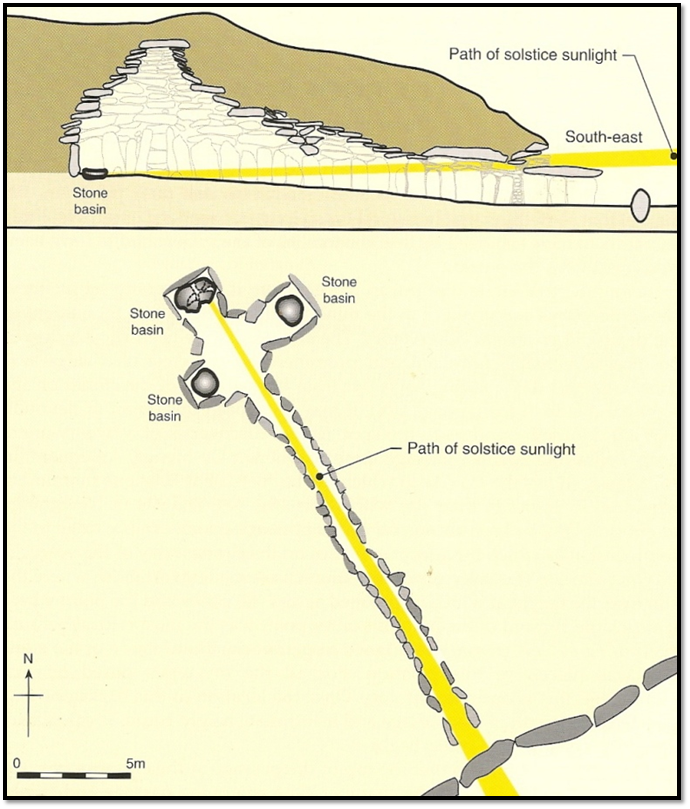
Newgrange tomb.
Yule probably was celebrated in Newgrange, a 5200-year-old passage tomb temple ubicated in Ireland. It is constructed in a way that in Winter Solstice the light of the sun goes through a small opening above its entrance to illuminate the death chamber for a few minutes marking the beginning of the triumph of light over darkness.
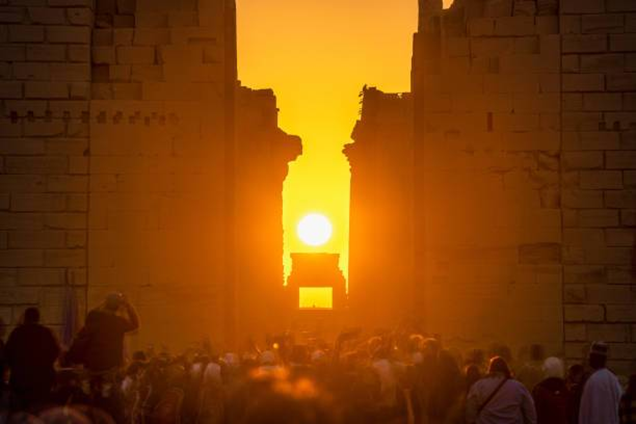
Karnak Temple Winter Solstice celebration in Egypt.
In Egypt, on December 21 of each year, the same astronomical event is observed in Karnak Temple, when the sunrise aligns with the architecture marking the beginning of the germination season in ancient Egypt.
During the Middle Ages and The Renaissance, Christmas celebrations were mixed with ancient pagan customs such as the Yule Log that were burned for 12 days. These customs symbolized the rebirth of sun light and a new cycle of life.
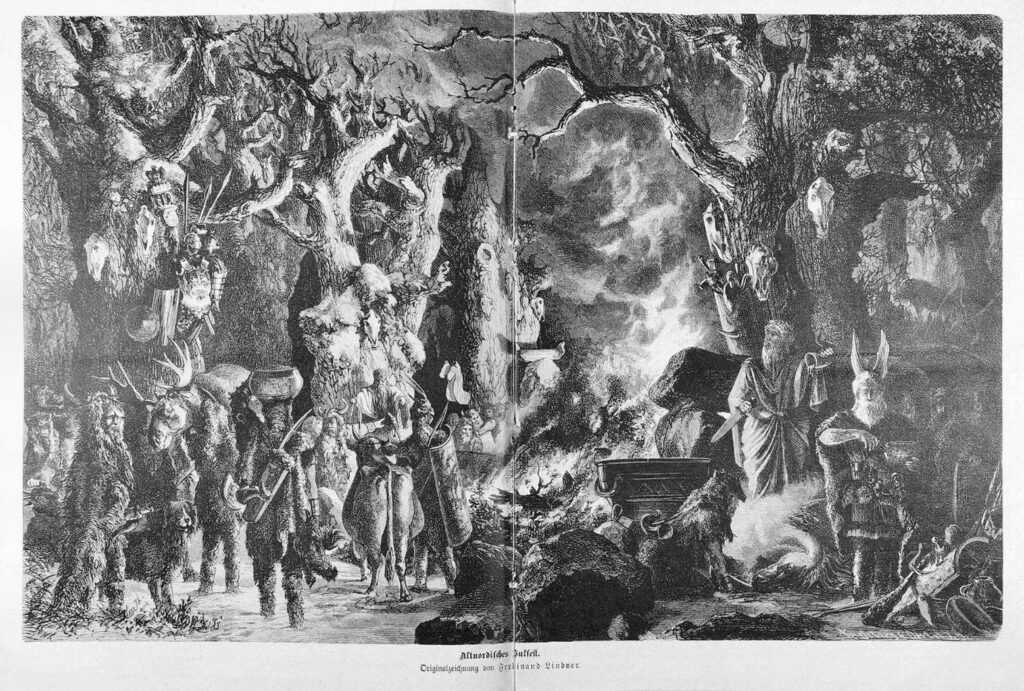
Illustration of an ancient Nordic Yule festival (Die Gartenlaube, 1880)
During The Renaissance, the Florence Christmas celebrations lasted from December 24th until January 6th where people spend their time reading the Bible and singing carols. Scenes of the Nativity of Jesus (representing the rebirth of the sun) would decorate public spaces mixed with pagan rituals traditions.
Many Renaissance artists, like Botticelli, captured the Nativity of Sun-Jesus.
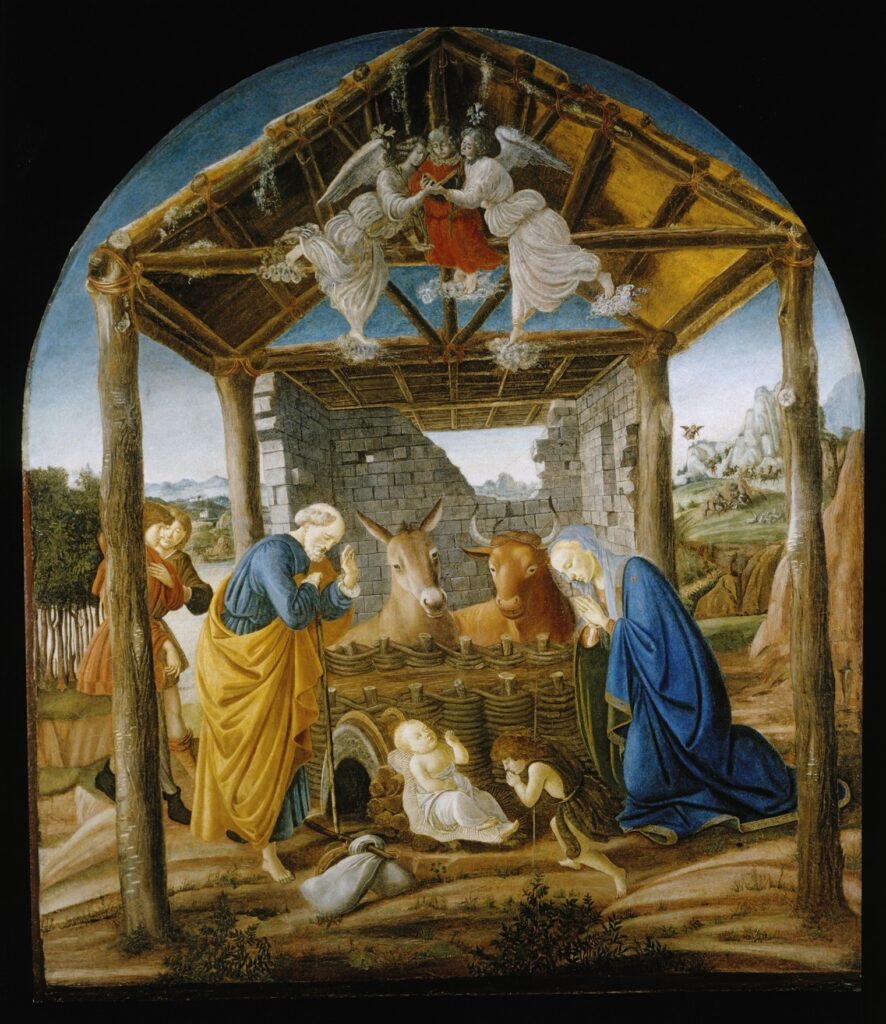
Sandro Botticelli, Nativity of Jesus, (1473-1475)
Long before the Renaissance, the Romans celebrated a whole week wild party in the Winter Solstice called Saturnalia, dedicated to Saturn, the god of agriculture, liberation, and time. Romans decorated their houses with greenery and candles, gave gifts to children, and enjoyed good food, drink and sex.
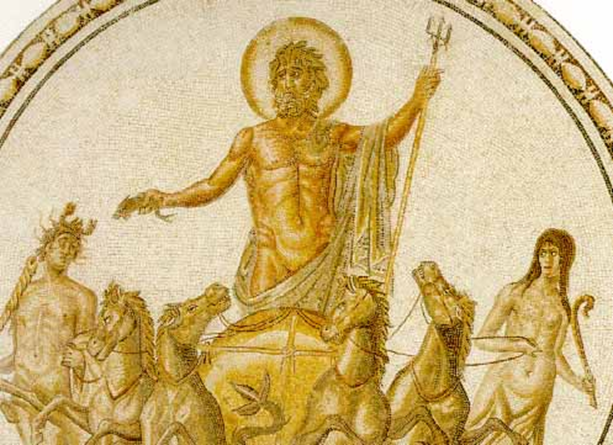
Saturn as the sun in his chariot.
Constantine banned Saturnalia in 312 AD making Christianity the official religion of the Roman Empire. The Catholic Church officials, realizing that they couldn’t eradicate Saturnalia, they co-opted it, making the celebration of the birth of Jesus the same day of the birth of Mithras.
Mithraism, the worship of the sun as the god Mithra, whose birth was on December 25, was incorporated in Hellenistic culture after Alexander the Great conquered Persia. It was represented with halo and rays in his head.
In the Renaissance, Jesus is often represented keeping the Mithraic halos and rays, and the cross behind its head shows the solstices and equinoxes.

Jesus’ mosaic showing the halo light of the sun and equinoxes and solstices.
Also, in ancient Greece the god Helios (the sun) had a halo and rays emanating from his head.
Coming back to the Roman Saturnalia inherited from the Greeks, a much older Winter Solstice festival was celebrated in ancient Greece.
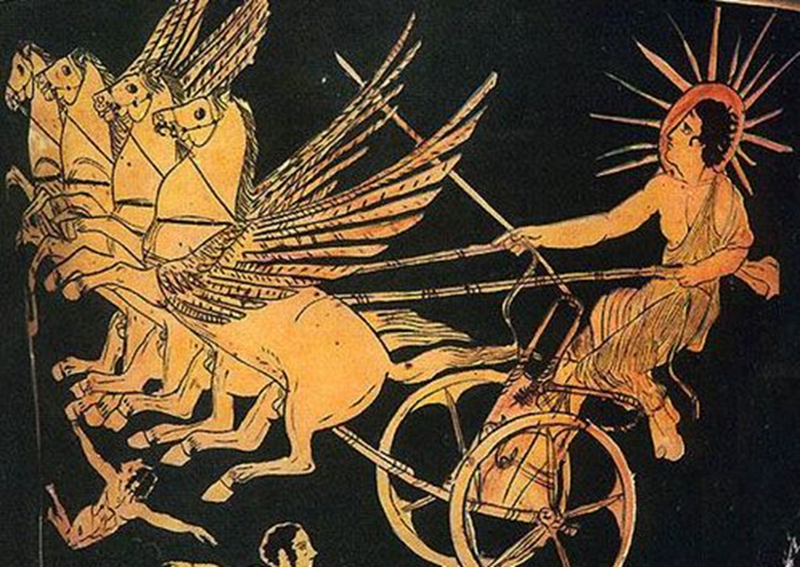
Detail of Helios from a red-figure vase, 5th century BC, British Museum
In ancient Greece the most important festival of the year was the Winter Solstice celebrations in honour of Poseidon, the god of the sea. It was a whole month of all-aloud debauchery. Wine and “erotic cakes” were consumed. Women, spent one night drinking naked and exchanging saucy banter; men, lit a huge bonfire. All throughout Greece public banquets were offered and sacrificed animals were made with no expense restrictions.
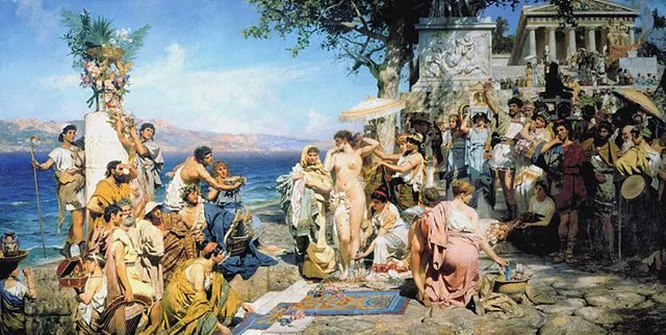
Phryne at the Poseidonia in Eleusis by Henryk Siemiradzki, c. 1889.
From the Middle Ages until the XIX century Christmas celebrations were very pagan in Britain, Europe and U.S.
That changed and today’s model of Christmas is the U.S. model, a kind of an industrial commerce Christmas more focused on commerce, family and religion, but ignoring its natural origin from the Winter Solstice.
CONCLUSION
Men in the south hemisphere who celebrate Winter Solstice in Summer Solstice are creating cognitive dissonance in their subconscious because they violate the Law of Causality.
The Law of Causality says that “if something is what it is, it will act accordingly to its nature always”. That is why water wets and fire burns, Winter Solstice marks the birth of the sun and Summer Solstice marks its death. So, Christmas should be celebrated the 21st of June in the southern hemisphere if its people want to live without ignoring its five senses and reason, and to create a culture in synchronicity with nature like the Incas did. Or minimum what they can do is to understand the astronomical aspect of the origins of Christmas.
Now answer to question 31.
QUESTION N° 31
Causality says that, if something is what it is, it will act accordingly to its nature, sometimes yes,
a) True
b) False
The answer is: false. If an entity or entities together exists, it will ALWAYS produce actions accordingly to their nature.
Leave your comments here.
